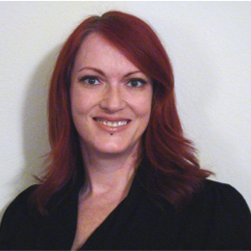The green probe mix contains a 173kb probe centromeric to the BCR gene that spans the GNAZ and RAB36 genes. A second green probe covers a 148kb region telomeric to the BCR gene that spans part of the IGLL1 gene.
The red and aqua probe mix contains a 348kb red probe that spans the ABL1 gene and a 173kb aqua probe that spans the ASS1 gene.
The BCR (BCR activator of RhoGEF and GTPase) gene is located at 22q11.2, the ABL1 (ABL proto-oncogene 1, non-receptor tyrosine kinase) gene is located at 9q34.1 and the ASS1 (argininosuccinate synthase 1) gene is located at 9q34.1. Translocation between BCR and ABL1 gives rise to the BCR::ABL1 fusion gene. The presence of a BCR::ABL1 fusion has important diagnostic and prognostic implications in a number of haematological disorders.
The t(9;22)(q34.1;q11.2) translocation is the hallmark of chronic myeloid leukaemia (CML) and is found in around 90-95%1 of cases. The remaining cases have a variant translocation or have a cryptic translocation between 9q34.1 and 22q11.2 that cannot be identified by routine cytogenetic analysis1. BCR::ABL1 fusions can also be found in 25% of adult acute lymphoblastic leukaemia (ALL) and in 2-4% of childhood ALL1. This rearrangement is also seen in rare cases of acute myeloid leukaemia (AML)2.
The translocation between chromosomes 9 and 22 can be accompanied by loss of proximal sequences on the derivative chromosome 9, including the ASS1 (argininosuccinate synthase 1) region3.
The CytoCell® BCR/ABL (ABL1) Plus Translocation, Dual Fusion Probe is a qualitative, non-automated, fluorescence in situ hybridisation (FISH) test used to detect chromosomal rearrangements between the 9q34.1 region on chromosome 9 and the 22q11.2 region on chromosome 22, with or without concomitant deletions of the ASS1 region at 9q34.1 on chromosome 9, in Carnoy’s solution (3:1 methanol/acetic acid) fixed haematologically-derived cell suspensions from patients with confirmed or suspected chronic myeloid leukaemia (CML), acute myeloid leukaemia (AML) or acute lymphoblastic leukaemia (ALL).
This device is designed as an adjunct to other clinical and histopathological tests in recognised diagnostic and clinical care pathways, where knowledge of BCR::ABL1 translocation status and ASS1 deletion status would be important for clinical management.
This device is designed to detect rearrangements with breakpoints in the region covered by the red and green clones, or deletions in the region covered by the aqua clones in this probe set, which include the ABL1, BCR and ASS1 regions. Breakpoints outside this region, variant rearrangements wholly contained within this region, or partial losses of this region may not be detected with this device. This device is not intended for: use as a stand-alone diagnostic, use as a companion diagnostic, prenatal testing, population-based screening, near-patient testing, or self-testing. This device has not been validated for sample types, disease types, or purposes outside of those stated in the intended purpose.
It is intended as an adjunct to other diagnostic laboratory tests and therapeutic action should not be initiated on the basis of the FISH result alone. Reporting and interpretation of FISH results should be performed by suitably qualified staff, consistent with professional standards of practice, and should take into consideration other relevant test results, clinical and diagnostic information. This device is intended for laboratory professional use only.
Failure to adhere to the protocol may affect the performance and lead to false positive/negative results.
I first came across CytoCell FISH probes in a previous lab I worked in and I was struck by the quality of the products. Since this time, I have been recommending and introducing CytoCell probes across all application areas — now they are the primary FISH probes used in our lab. They have an excellent range of products and their ready-to-use reagent format saves considerable time.

Elizabeth Benner
Medical Technologist, University of Arizona Health Network, USA
